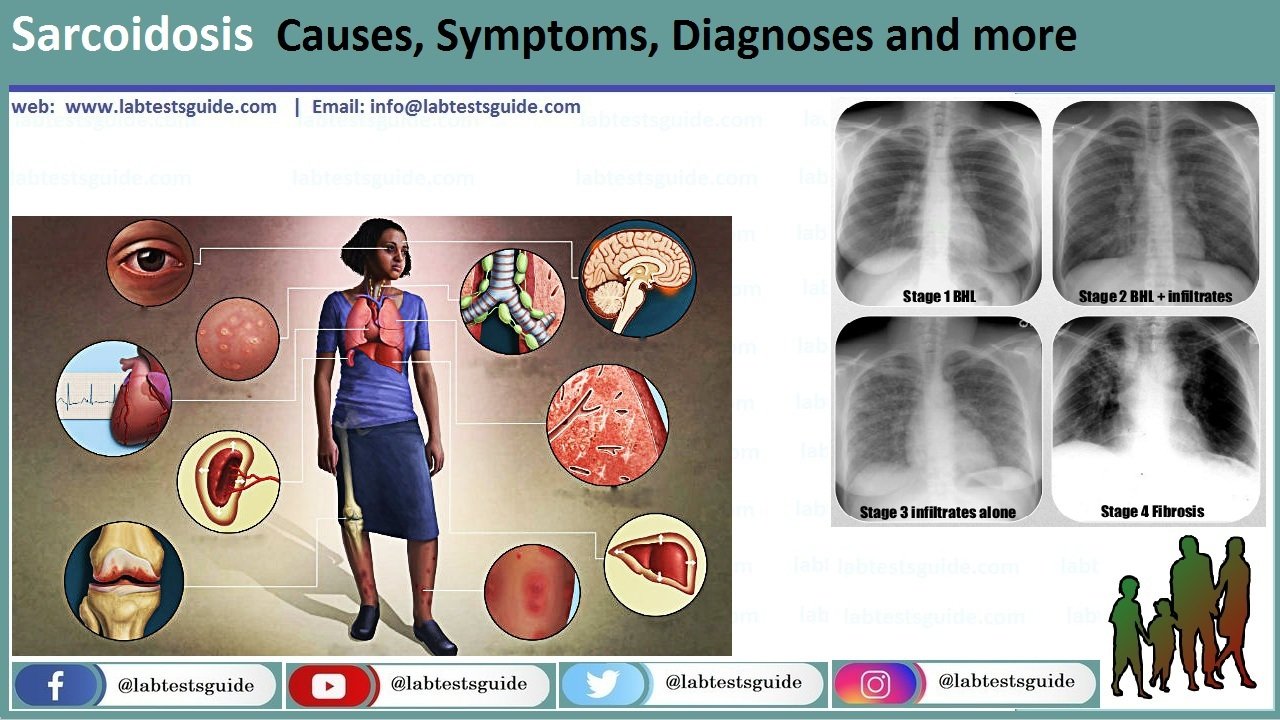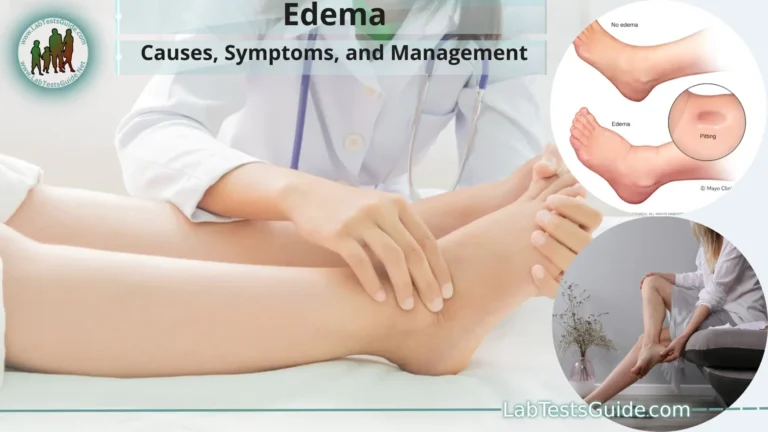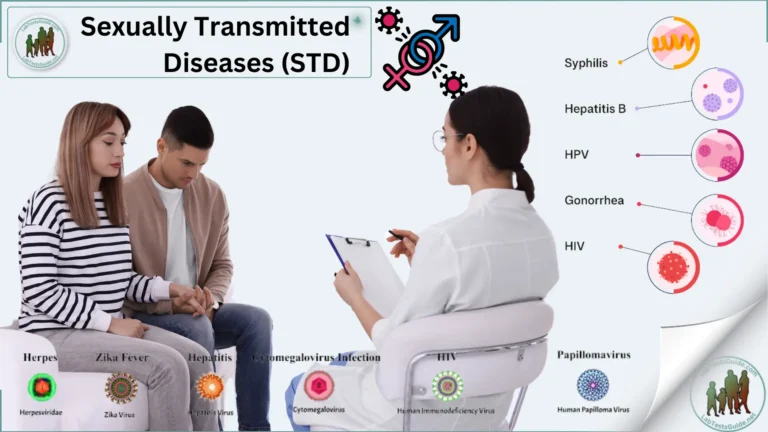Sarcoidosis is a disease characterized by the growth of small collections of inflammatory cells (granulomas) in any part of the body, most commonly in the lungs and lymph nodes. But it can also affect the eyes, skin, heart, and other organs.

Symptoms of Sarcoidosis:
Signs and symptoms of sarcoidosis vary depending on which organs are affected
General symptoms
Sarcoidosis can begin with these signs and symptoms:
- Fatigue
- Swollen lymph nodes
- Weight loss
- Pain and swelling in joints, such as the ankles
Lung symptoms
Sarcoidosis most often affects the lungs and may cause lung problems, such as:
- Persistent dry cough
- Shortness of breath
- Wheezing
- Chest pain
Skin symptoms
Sarcoidosis may cause skin problems, which may include:
- A rash of red or reddish-purple bumps, usually located on the shins or ankles, which may be warm and tender to the touch
- Disfiguring sores (lesions) on the nose, cheeks and ears
- Areas of skin that are darker or lighter in color
- Growths under the skin (nodules), particularly around scars or tattoos
Eye symptoms
Sarcoidosis can affect the eyes without causing any symptoms, so it’s important to have your eyes checked regularly. When eye signs and symptoms do occur, they may include:
- Blurred vision
- Eye pain
- Burning, itching or dry eyes
- Severe redness
- Sensitivity to light
Heart symptoms
Signs and symptoms related to cardiac sarcoidosis may include:
- Chest pain
- Shortness of breath (dyspnea)
- Fainting (syncope)
- Fatigue
- Irregular heartbeats (arrhythmias)
- Rapid or fluttering heart beat (palpitations)
- Swelling caused by excess fluid (edema)
Causes of Sarcoidosis:
Doctors do not know the exact cause of sarcoidosis. Some people appear to have a genetic predisposition to develop the disease, which can be caused by bacteria, viruses, dust, or chemicals.
This triggers an overreaction of your immune system and immune cells begin to accumulate in a pattern of inflammation called granulomas. As granulomas build up in an organ, the function of that organ can be affected.
Risk factor’s:
While anyone can develop sarcoidosis, factors that can increase your risk include:
- Age and sex Sarcoidosis can occur at any age, but it often occurs between the ages of 20 and 60. Women are slightly more likely to develop the disease.
- Race. People of African descent and those of Northern European descent have a higher incidence of sarcoidosis. African Americans are more likely to have other organs involved along with the lungs.
- Family history. If someone in your family has had sarcoidosis, they are more likely to develop the disease.
Diagnoses:
Diagnostic tests can help rule out other disorders and determine which body systems may be affected by sarcoidosis. Your doctor may recommend tests such as:
- Blood and urine tests to assess your overall health and how well your kidneys and liver are working
- Chest X-ray to check your lungs and heart
- Chest computed tomography (CT) scan to check your lungs
- Pulmonary (lung) function tests to measure lung volume and the amount of oxygen that the lungs deliver to the blood.
- Electrocardiogram (ECG or EKG) to detect heart problems and monitor the condition of the heart
- Eye exam to check for vision problems that may be caused by sarcoidosis.
- Positron emission tomography (PET) or magnetic resonance imaging (MRI) if sarcoidosis appears to be affecting your heart or central nervous system
Treatment:
There is no cure for sarcoidosis, but in many cases, it goes away on its own. You may not even need treatment if you have no symptoms or only mild symptoms of the condition. The severity and extent of your condition will determine if and what type of treatment is necessary.
Possible References Used





